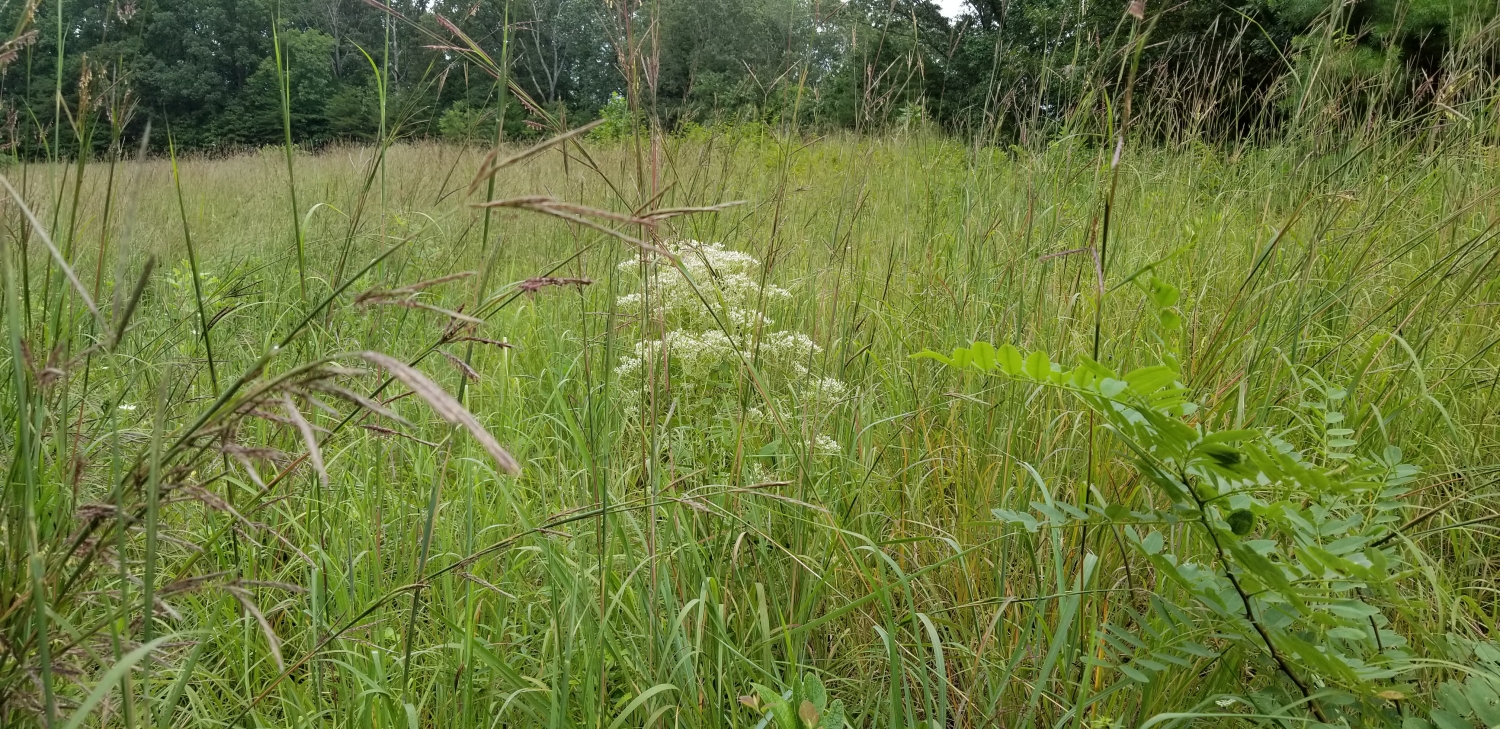North Field Trail

Rochelle Garwood
The field you are walking along has been restored to native habitat from a former hayfield.
Warm-season Native Grasses
Warm-season prairie grasses were once widespread throughout Virginia. With the coming of European settlers and their agricultural and livestock practices, these native grasslands were replaced with cool-season grasses like fescue and bluegrass. Tall fescue forms a thick sod inhibiting the growth of other plants.
As the native grasslands have diminished so have wildlife that depended on them for existence. Today, less than one percent of native prairies remain in North America. However, there is a growing movement to restore native prairies by converting fescue pastures back to native grasslands.
Native grassland restoration began in the year 2000 in what were at the time hayfields here and to the south of the parking lot .Fescue in the former hayfields was eradicated and replaced with native warm season grasses to provide a better habitat for wildlife. Look for big bluestem (above left) and Indian grass, both six to eight feet tall, as well as little bluestem and broomsedge. Over time, other typical grassland plants such as boneset (above center) have moved in. Trees such as black locust (above right) would eventually turn this field into a woodland if not for annual mowing.